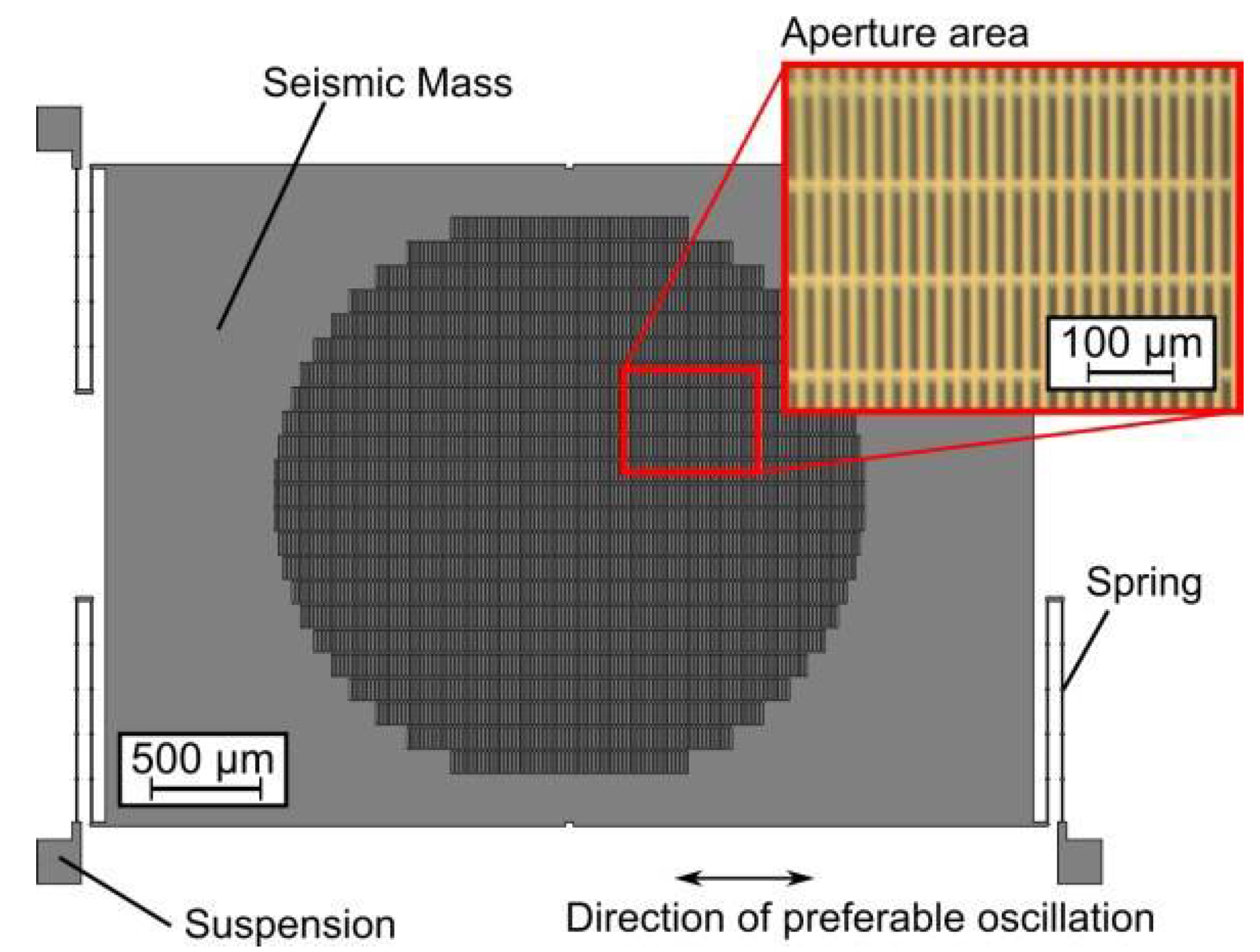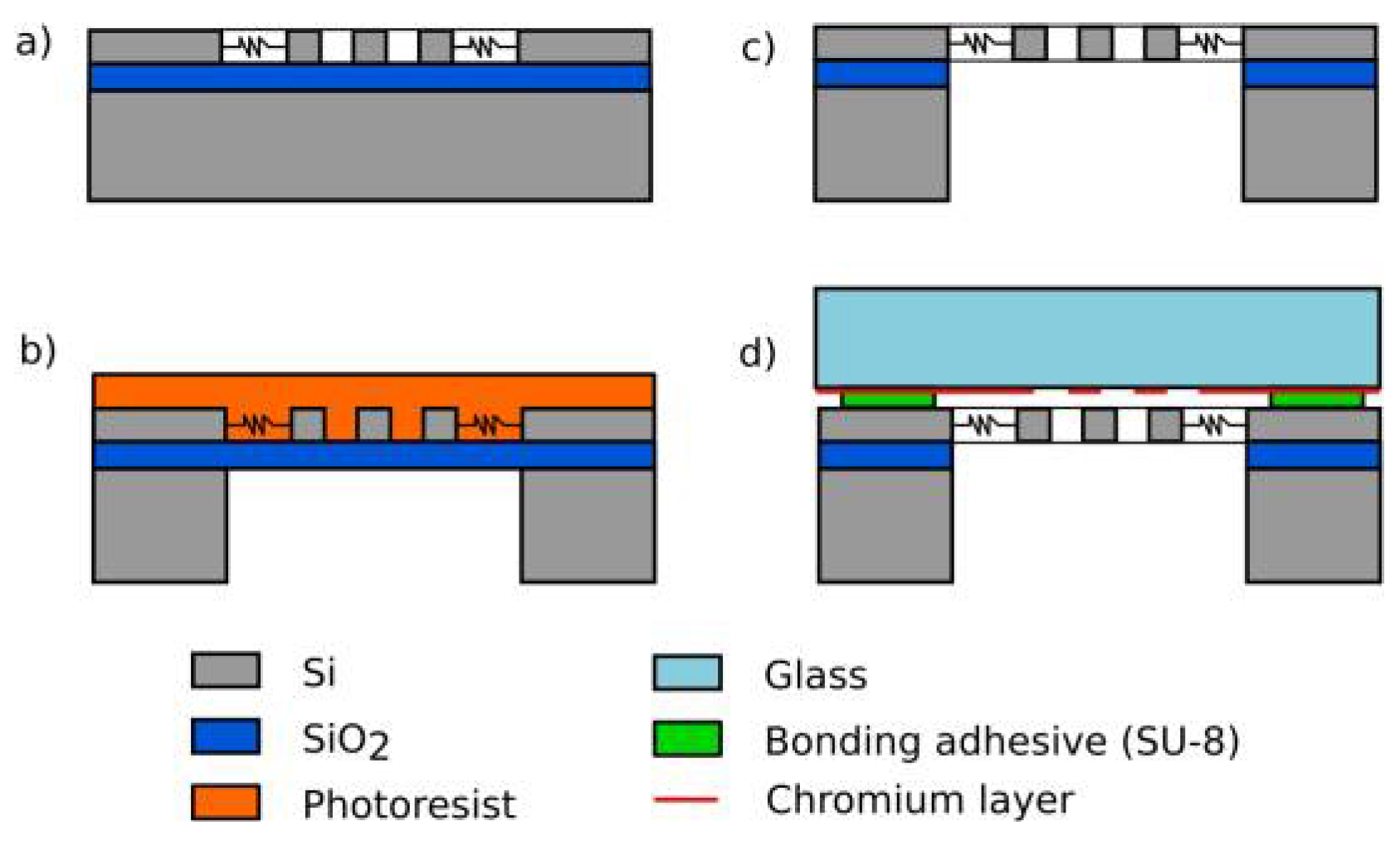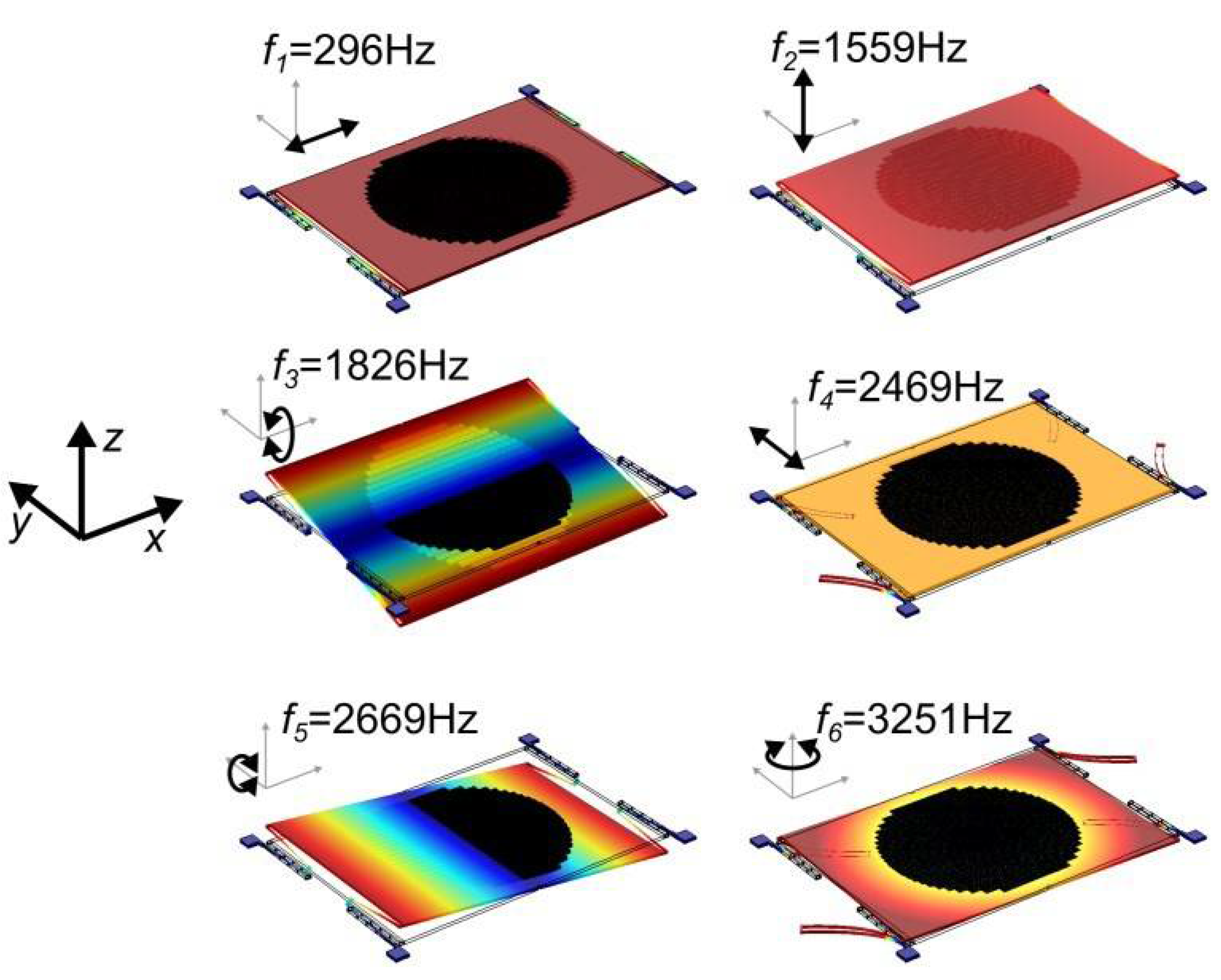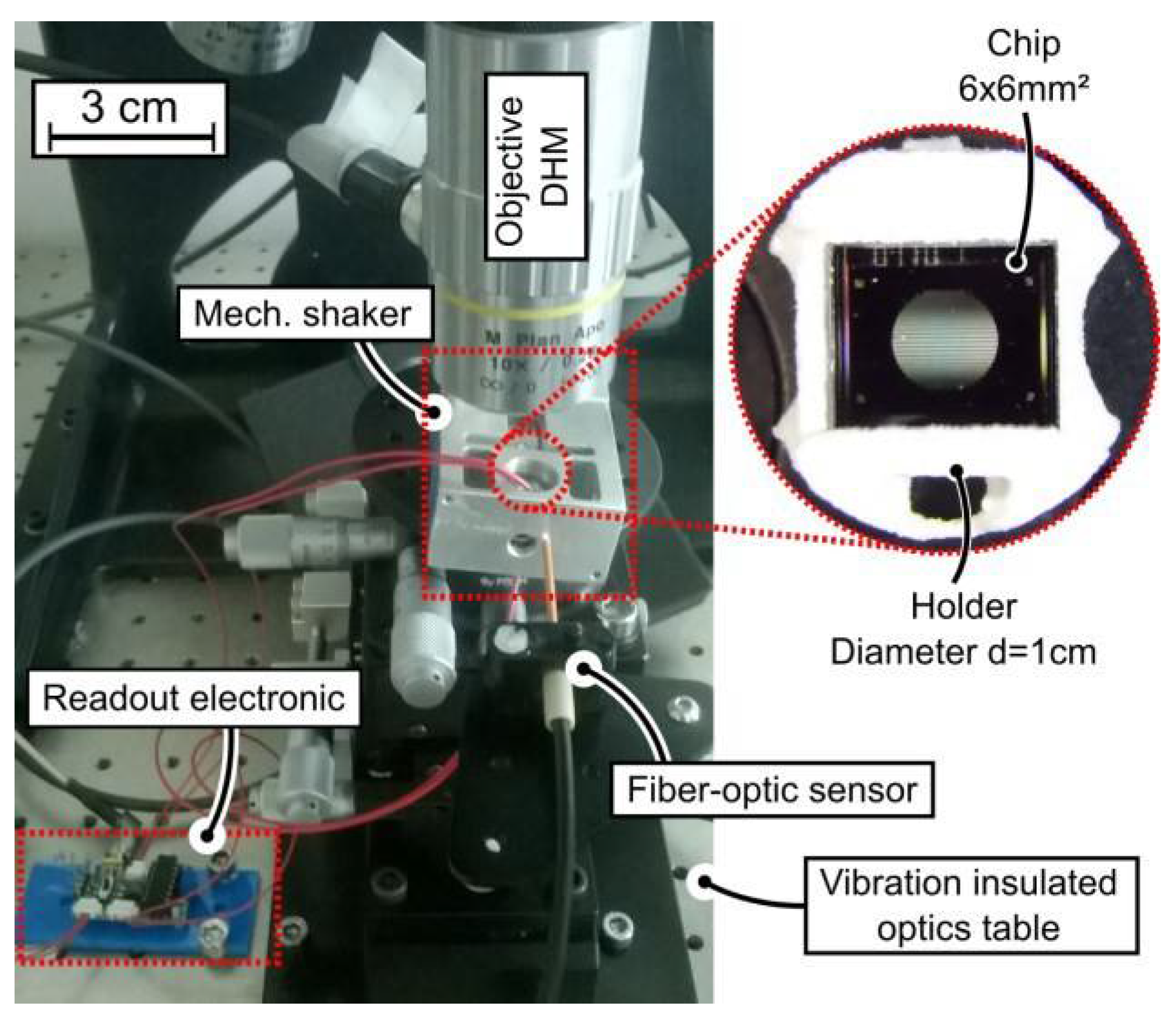Cross-Sensitivity of an Optomechanical MEMS Transducer
Abstract
:1. Introduction
2. Materials and Methods
3. Results
4. Conclusions
Author Contributions
Acknowledgments
Conflicts of Interest
References
- Perlmutter, M.; Robin, L. High-performance, low cost inertial MEMS: A market in motion! In Proceedings of the 2012 IEEE/ION Position, Location and Navigation Symposium, Myrtle Beach, SC, USA, 23–26 April 2012; 225–229; pp. 225–229. [Google Scholar] [CrossRef]
- Lammel, G. The future of MEMS sensors in our connected world. In Proceedings of the 2015 28th IEEE International Conference on Micro Electro Mechanical Systems (MEMS), Estoril, Portugal, 18–22 January 2015; pp. 61–64. [Google Scholar] [CrossRef]
- Masako, T. An industrial and applied review of new MEMS devices features. Microelectron. Eng. 2007, 84, 1341–1344. [Google Scholar] [CrossRef]
- Eswaran, P.; Malarvizhi, S. MEMS capacitive pressure sensors: a review on recent development and prospective. Int. J. Eng. Technol. 2013, 5, 2734–2746. [Google Scholar]
- Hortschitz, W.; Kainz, A.; Steiner, H.; Stifter, M.; Kohl, F.; Schalko, J.; Sauter, T.; Keplinger, F. MOEMS Vibration Sensor for Advanced Low-frequency Applications with pm Resolution. Procedia Eng. 2014, 87, 835–838. [Google Scholar] [CrossRef]
- Middlemiss, R.P.; Samarelli, A.; Paul, D.J.; Hough, J.; Rowan, S.; Hammond, G.D. Measurement of the Earth tides with a MEMS gravimeter. Nature 2016, 531, 614–617. [Google Scholar] [CrossRef] [PubMed]
- Kainz, A.; Steiner, H.; Schalko, J.; Jachimowicz, A.; Kohl, F.; Stifter, M.; Beigelbeck, R.; Keplinger, F.; Hortschitz, W. Distortion-free measurement of electric field strength with a MEMS sensor. Nature Electron. 2018, 1, 68–73. [Google Scholar] [CrossRef] [PubMed]





Publisher’s Note: MDPI stays neutral with regard to jurisdictional claims in published maps and institutional affiliations. |
© 2018 by the authors. Licensee MDPI, Basel, Switzerland. This article is an open access article distributed under the terms and conditions of the Creative Commons Attribution (CC BY) license (https://creativecommons.org/licenses/by/4.0/).
Share and Cite
Steiner, H.; Kainz, A.; Stifter, M.; Kahr, M.; Kovacs, G.; Keplinger, F.; Hortschitz, W. Cross-Sensitivity of an Optomechanical MEMS Transducer. Proceedings 2018, 2, 719. https://doi.org/10.3390/proceedings2130719
Steiner H, Kainz A, Stifter M, Kahr M, Kovacs G, Keplinger F, Hortschitz W. Cross-Sensitivity of an Optomechanical MEMS Transducer. Proceedings. 2018; 2(13):719. https://doi.org/10.3390/proceedings2130719
Chicago/Turabian StyleSteiner, Harald, Andreas Kainz, Michael Stifter, Matthias Kahr, Gabor Kovacs, Franz Keplinger, and Wilfried Hortschitz. 2018. "Cross-Sensitivity of an Optomechanical MEMS Transducer" Proceedings 2, no. 13: 719. https://doi.org/10.3390/proceedings2130719
APA StyleSteiner, H., Kainz, A., Stifter, M., Kahr, M., Kovacs, G., Keplinger, F., & Hortschitz, W. (2018). Cross-Sensitivity of an Optomechanical MEMS Transducer. Proceedings, 2(13), 719. https://doi.org/10.3390/proceedings2130719




